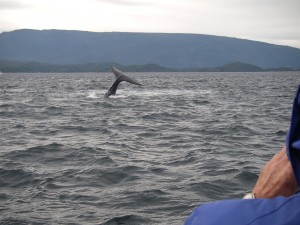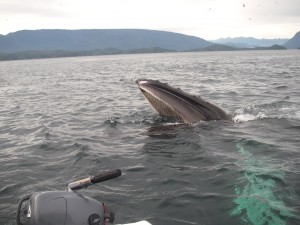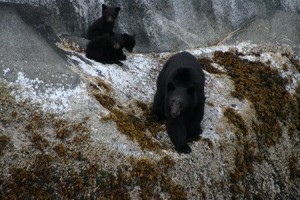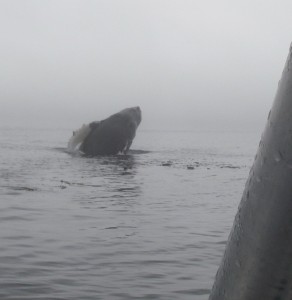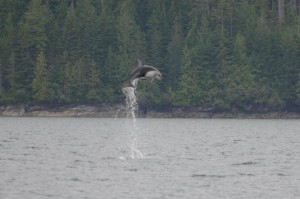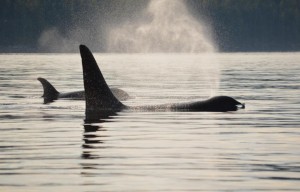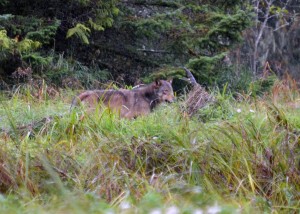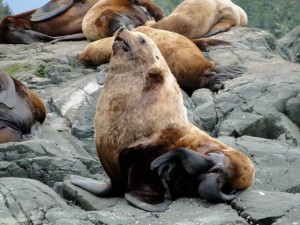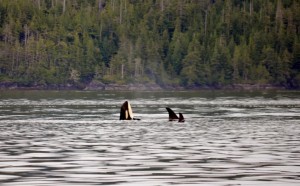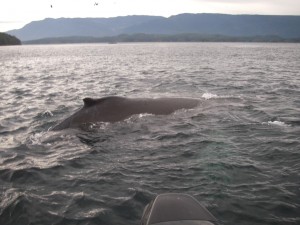
While on our whale watching day we managed to see stellar sealions, harbour seas, eagles and a few dolphins but all these are hard to compare to a humpback whale rising out of the water behind the boat while we are taking a lunch break. The important part of the previous sentence is the word “day”. We are not limited to as four-hour tour like the companies from Telegraph Cove or Port McNeil nor do we arrive late in the morning and have to leave early as the companies that travel from a greater distance. We are close to the viewing area, approximately 50 minutes, and unless it is your departure day there is no set time to return to camp so if the activity occurs later in the day we are later returning to the lodge.
